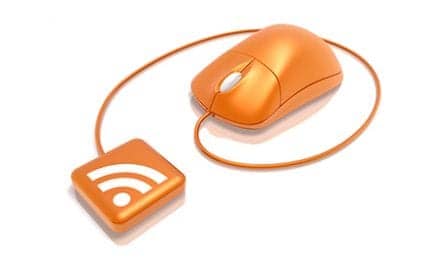To take advantage of advanced assistive walking technologies, SCI patients must stand before they can walk.
by Stephenie Labandz, PT, DPT
Great strides are being made in medical and technological research to enhance the health and function of those living with neurological impairments. While these are a great source of inspiration and hope, too many potential beneficiaries are being allowed to literally sit around waiting for these interventions to become widely available when something as simple, effective, and affordable as standing can be implemented now. Allowing those affected by immobility to benefit from early and ongoing participation in standing programs will help avoid secondary health complications associated with immobility and remain more physiologically receptive to therapeutic, pharmacologic, surgical, or technological advances the future may hold.
Current Research
The National Institute of Neurological Disorders and Stroke identifies four leading areas of advancement in treatment for spinal cord injury (SCI).1 Neuroprotection involves using approaches including anti-inflammatory drugs, antibiotics, hormones, therapeutic hypothermia, and manipulating the immune response to minimize damage to neural tissue in the acute phase of injury. Regeneration is aimed at stimulating axon growth and inhibiting formation of glial tissue through use of anti-inflammatory drugs, antibodies that block proteins that inhibit axon regeneration, an enzyme that breaks down glial scarring to facilitate axon growth, and an engineered cellular matrix to bridge the neural lesion. Cell replacement includes transplanting cells to the affected area in an attempt to regenerate neuronal growth. Retraining central nervous system circuits and plasticity is where rehabilitation professionals can have the greatest impact. These approaches encourage reorganization or formation of new nerve connections in the subacute and chronic phases of injury with locomotor training such as body weight supported gait, epidural stimulation, functional electrical stimulation (FES), robotic-assisted therapy, and brain-computer interfaces.
Retraining the central nervous system and maximizing neural plasticity is our specialty in rehabilitation. We have the ability to restore function and prevent secondary disability and other health complications related to neurological impairments. Cellular and pharmacological interventions show the most promise in treating acute injury. Locomotor training and robotic assisted gait can help improve function months or years after injury, provided that an individual has been able to minimize the physiological side effects that accompany immobility. Regular physical activity should be implemented as soon as possible after injury, before the effects of neuromuscular degeneration have a significant impact.2 Initiating standing early and participating in a regular standing program are beneficial for multiple body systems and increase the ability of an individual to derive maximum benefit from other physical or pharmacologic treatments as they become available.
Robotic Requisites
Robotic gait assistance was introduced to most of the United States when featured on the television show Glee to help a fictional wheelchair user walk on an episode that aired in December 2010. Claire Lomas, a British woman with a T4 complete spinal injury, used a robotic exoskeleton to complete the 2012 London Marathon for a duration of 17 days, and was honored by being chosen to light the torch at the 2012 Paralympic Games, which she also did while standing with robotic assistance. As we attend to these exciting and promising developments, it is essential to keep in mind how important it is in habilitation and rehabilitation for one to stand before one can walk.
The exoskeleton is approved in the United States for clinical use only at this time, at an estimated cost of approximately $69,000 per unit.3 The United States is conducting ongoing research regarding the efficacy of mobility for individuals with paraplegia using a robotic exoskeleton. Tasks being assessed are the transition between sit and stand, balance in standing, ambulation over level ground, and ambulation up and down stairs.4 Additional variables being measured are sitting balance, bowel function, bladder function, muscle spasms, quality of life, resting and exercise energy expenditure, body composition, and neurological status. In order to be included, the individual must be at least 6 months post injury, must not have had a lower extremity fracture over the previous 2 years, must meet minimum requirements for bone mineral density, must be free of pressure ulcers affecting the trunk or lower extremities, must not be affected by severe spasticity, and must not have severe flexion contractures at the hip or knee. It is also essential that participants not be affected by orthostatic intolerance, which is ensured by requiring a history of standing on a regular basis.5,6
Adequate Bone Mineral Density
Bone density is significantly affected as a result of decreased dynamic weight bearing activity following SCI. Individuals who did not participate in a standing program following injury had a 24% decrease in lower extremity bone mineral density after 1 year. Those who used a stander at least 1 hour a day 5 days a week had 0.108 g/cm2 greater bone density after 2 years than those who did not.7 Standing is essential to maintain bone density to decrease the risk of injury during wheelchair mobility, transfers, and participation in therapeutic activities.
Integumentary Integrity
Immobility and sensory deficits, common to spinal cord injury, are major contributing factors to the development of pressure ulcers. It is estimated that pressure ulcers and related complications account for up to one fourth of the annual cost of care for individuals with spinal cord injuries.8 The sacrum, heels, and trochanters are common locations for ulcerations to develop as a result of prolonged pressure and decreased circulation related to positioning in seated or lying positions.9 Standing alleviates pressure on these vulnerable areas by encouraging circulation and redistributing how weight is borne through the body.
Minimal Spasticity
Spasticity is a common component of living with a spinal cord injury, affecting 65% to 78% of those with chronic SCI. The presence of spasticity can negatively impact health-related quality of life by affecting performance of activities of daily living (ADLs), causing pain and fatigue, disturbing sleep, and impeding rehabilitation efforts.10 Using a stander to bear weight through a joint affected by a hypertonic muscle group for a prolonged period of time decreases the amount of spasticity, particularly if the muscle is placed in a slightly stretched position.11
Functional Range of Motion
The risk of developing joint contracture following spinal cord injury is high because of decreased active movement of the joints accompanied by prolonged periods of time spent in a limited number of positions. Of 92 consecutive patients admitted to two Australian rehabilitation units following acute spinal cord injury, 32% developed contractures at the hip, 11% contractures at the knee, and 40% developed contractures at the ankle at 1 year post injury.12 Supported standing allows a prolonged stretch of these commonly affected areas, using the patient’s own body weight to lengthen the muscles. Thirty to 60 minutes of daily standing allows stretching to take place during a much longer period of time and with much greater and more consistent applied force than is practical or even possible with traditional range of motion programs. Standing helps to maintain flexibility when used preventively and can increase range of motion at contracted joints.11 Some prone, supine, and upright standers have the capability to accommodate mildly contracted joints with special adjustments or accessories. More severe or asymmetrical contractures are better accommodated by sit-to-stand standers, which can support an individual anywhere between a seated position with hips and knees at 90 degrees and an upright position with joints in a neutral position. Adjustable footplates and wedges are available for most standing options to accommodate limitations at the ankle.
Cardiovascular Control
The incidence of orthostatic hypotension in tetraplegia is as high as 66.7% regardless of whether the spinal cord injury is complete or incomplete.13 Dysregulation of blood pressure has a significant impact on one’s ability to participate in rehabilitation and on overall perception of health-related quality of life.14 Incorporating exercise and activity to maximize cardiovascular function and minimize pooling of blood in the extremities is essential in building tolerance to upright positioning. For those with severe intolerance, gradual progression toward standing using a tilt table with close monitoring can help the body accommodate to being upright. Once an individual tolerates an upright sitting position, a sit-to-stand stander allows for further graded progression toward upright standing. Most standers allow for the addition of exercise in the form of active or active assisted range of motion, isometrics, free weights, pulleys, or upper body ergometer to increase strength and aerobic capacity. Electrical stimulation also may be easily incorporated to encourage blood flow, decrease effects of hypotension, and encourage functional muscle activation. Mobile standers propelled with arm motions and standers that have the option of incorporating a stepping or gliding motion can further enhance activity tolerance.
The Time Is Now
A standing program can benefit many people with significant mobility impairments, whether mobility has been limited for days, months, or years. Support from medical and therapy teams must be in place to ensure safety and gradual, well-tolerated progression. As continuous advances take place in science and research, we need to be sure we do all we can to support the continuous health and well-being of those who stand to benefit from those advances. RM
Stephenie Labandz, PT, DPT, received her Master of Physical Therapy and Doctor of Physical Therapy degrees from the College of St. Catherine in Minneapolis. She currently works for Robbinsdale Area Schools in Minnesota, serving children and families through the Early Intervention and Early Childhood Special Education programs. For more information, contact [email protected].
References
1. National Institute of Neurological Disorders and Stroke. Spinal Cord Injury website. http://www.ninds.nih.gov/disorders/sci/detail_sci.htm. Accessed December 30, 2013.
2. Craven CT, Gollee H, Coupaud S, Purcell MA, Allan DB. Investigation of robotic-assisted tilt-table therapy for early-stage spinal cord injury rehabilitation. J Rehabil Res Dev. 2013;50(3):367-378.
3. Elis N. The Jerusalem Post. Israeli ReWalk device gets major Asian investment. September 25, 2013. http://www.jpost.com/Business/Business-News/Israeli-ReWalk-device-gets-major-Asian-investment-327031. Accessed December 30, 2013.
4. U.S. National Institutes of Health. The ReWalk Exoskeletal Walking System for Persons With Paraplegia (VA_ReWalk). http://clinicaltrials.gov/show/NCT01454570. Accessed December 30, 2013.
5. ReWalk Testing—Medical Clearance Form. ReWalk.com. http://rewalk.com/wp-content/uploads/2013/08/ReWalk-Testing-Medical-Clearance-Form-EN-V2.pdf. Accessed December 30, 2013.
6. Kolakowsky-Hayner SA, Crew J, Moran S, Shah A. Safety and feasibility of using the EksoTM Bionic Exoskeleton to aid ambulation after spinal cord injury. J Spine. 2013;S4:003. doi:10.4172/2165-7939.S4-003
7. Alekna V, Tamulaitiene M, Sinevicius T, Juocevicius A. Effect of weight-bearing activities on bone mineral density in spinal cord injured patients during the period of the first two years. Spinal Cord. 2008;46(11):727-732.
8. Edlich R, Winters KL, Lim HW, et al. Pressure ulcer prevention. J Long Term Eff Med Implants. 2004;14(4):20-39.
9. Garber SL, Rintala DH. Pressure ulcers in veterans with spinal cord injury: a retrospective study. J Rehabil Res Dev. 2003;40(5):433-442.
10. Adams MM, Hicks AL. Spasticity after spinal cord injury. Spinal Cord. 2005;43:577–586.
11. Glickman LB, Geigle PR, Paleg GS. A systematic review of supported standing programs. J Pediatr Rehabil Med. 2010;3(3):197-213.
12. Diong J, Harvey LA, Kwah LK, et al. Incidence and predictors of contracture after spinal cord injury—a prospective cohort study. Spinal Cord. 2012;50(8):579-584.
13. Chelvarajah R. Orthostatic hypotension following spinal cord injury: impact on the use of standing apparatus. NeuroRehabilitation. 2009;24(3):237-242.
14. Carlozzi NE, Fyffe D, Morin KG, et al. Impact of blood pressure dysregulation on health-related quality of life in persons with spinal cord injury: development of a conceptual model. Arch Phys Med Rehabil. 2013;94(9):1721-1730.





